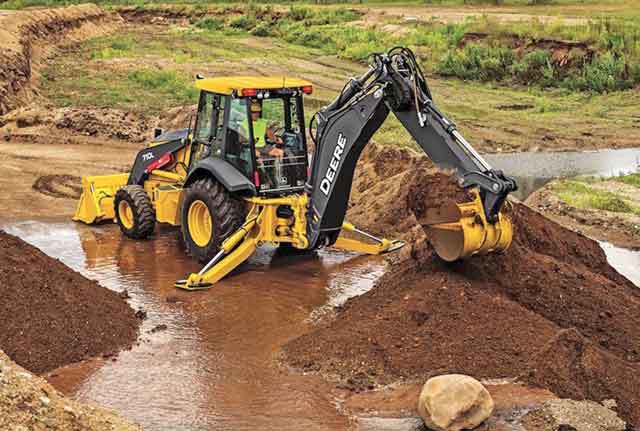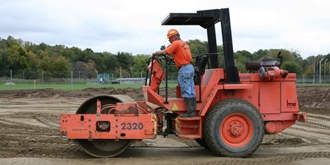Introducing the Art of Excavation: Pro Tips for Safe and Productive Digging
In the world of excavation, the mastery of efficient and secure excavating is an art type that calls for accuracy, expertise, and adherence to well-known techniques. As dirt is transformed and earth is relocated, the ins and outs of excavation reveal themselves, requiring a keen understanding of equipment, dirt structure, safety and security protocols, and environmental factors to consider. The know-how needed to navigate these components successfully can indicate the distinction between a successful excavation task and a prospective disaster. By unraveling the layers of this intricate procedure, a world of insights and strategies awaits those seeking to boost their excavation abilities to brand-new heights.
Value of Proper Devices
To ensure the safety and effectiveness of any kind of excavation job, making use of the ideal devices is extremely important. The right tools not just enhance productivity but also reduce threats linked with excavating. Excavation projects vary in range and complexity, ranging from little household landscape design tasks to massive construction undertakings. Regardless of the job size, having the appropriate devices can make a significant distinction in the result.
Excavators are essential pieces of equipment in any kind of excavating procedure. These flexible devices come in different dimensions to match various job needs. Miniature excavators are perfect for smaller jobs, while bigger excavators take on more comprehensive jobs effectively. Backhoes are an additional vital tools kind, combining the functions of a loader and an excavator in one device. They are useful for jobs needing adaptability and ability to move.
Excavators excel in jobs that need pressing large quantities of dirt or particles. By spending in the suitable tools, excavation projects can be completed securely, on time, and with precision.
Understanding Dirt Structure
A detailed understanding of soil structure is basic for executing excavation jobs with accuracy and safety and security. Comprehending the various kinds of soil is important as it straight influences excavation methods, devices choice, and general job effectiveness.
Silt fragments are smaller sized than sand but larger than clay, providing moderate drainage and cohesion. Organic issue, such as rotting plant product, influences soil fertility and stability.
Before commencing excavation, conducting dirt examinations to identify its structure and characteristics is vital. This details assists in selecting the suitable equipment, executing precaution, and creating excavation strategies tailored to the certain dirt problems - lancaster excavation. By understanding soil structure, excavation specialists can enhance job results while making sure security and adherence to finest practices
Safety Measures and Methods
Recognizing soil composition is the keystone whereupon precaution and methods for excavation jobs are constructed, ensuring the health of employees and the success of the endeavor. There are several key measures that must be implemented to minimize risks and protect against mishaps. when it comes to safety throughout excavation.
Firstly, prior to any excavating commences, a detailed assessment of the site must be conducted to determine any prospective dangers such as underground utilities, unstable soil conditions, or neighboring frameworks that might posture a threat. It is crucial to have a competent individual supervise the excavation procedure to make sure that all security methods are complied with strictly.
Furthermore, all workers involved in the excavation must be properly educated in secure digging techniques and the appropriate operation of devices. By adhering to these safety actions and procedures, excavation tasks can be completed efficiently and without incident.
Reliable Excavation Planning
When embarking on an excavation task, precise preparation is important to guarantee effectiveness, safety, and successful outcomes. Efficient excavation preparation includes numerous essential actions that are essential for the smooth execution of the job. The initial action is to perform a complete site evaluation to recognize any possible risks, such as underground energies or unsteady soil conditions. This information is essential for establishing an in-depth excavation strategy that consists of precaution and run the risk of reduction methods.
As soon as the website evaluation is complete, the next action is to produce a clear timeline and routine for the excavation tasks. This consists of establishing the series of tasks, equipment requirements, and manpower appropriation. Correct scheduling helps stay clear of hold-ups and guarantees that the project remains on track.

In addition, interaction among all employee is paramount throughout the planning stage. Clear directives, routine updates, and effective sychronisation are important for an effective excavation project. By spending time and effort in careful planning, excavation groups can significantly enhance productivity, decrease risks, and accomplish successful outcomes.

Handling Environmental Factors To Consider
With increasing focus on environmental sustainability in construction techniques, handling ecological considerations has actually come to be an important facet of excavation projects. Excavation activities have the possible to impact the surrounding atmosphere via dirt erosion, debris runoff, environment interruption, and contamination of water resources. like this To reduce these risks, it is necessary to carry out best techniques that focus on environmental security.

Furthermore, correct waste monitoring is critical to stop dirt and water contamination. Executing procedures for the disposal of hazardous products, recycling of waste materials, and reducing the usage of dangerous chemicals can substantially minimize the environmental influence of excavation jobs. By integrating these practices right into excavation planning and implementation, construction firms can guarantee that their projects are not only secure and efficient but likewise environmentally accountable.
Conclusion
To conclude, mastering the art of excavation needs a complete understanding of correct tools, soil make-up, precaution, and efficient preparation. By following these guidelines and considering environmental aspects, excavations can be conducted securely and successfully. It is vital to prioritize security and performance in every digging project to guarantee effective outcomes.
As soil is turned and planet is relocated, the complexities of excavation expose themselves, requiring an eager understanding of equipment, dirt make-up, safety methods, and environmental factors to consider.To make sure the safety and security and efficiency of any kind of excavation project, utilizing the suitable devices is extremely important.A comprehensive grasp of soil composition is essential for carrying out excavation tasks with precision and safety and security. Understanding the different types of soil is essential as it directly affects excavation techniques, tools selection, and general project effectiveness. By comprehending dirt make-up, excavation specialists can boost task end results while making certain safety and security and check my blog adherence to best techniques.